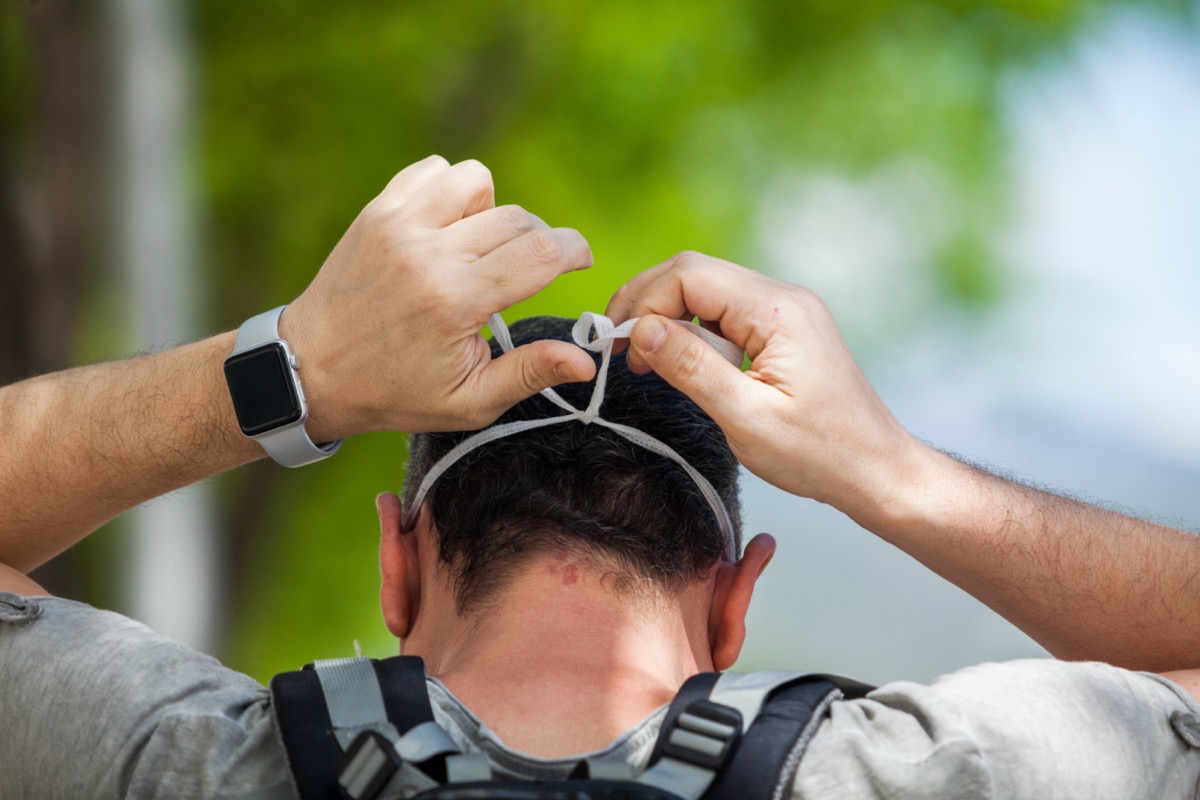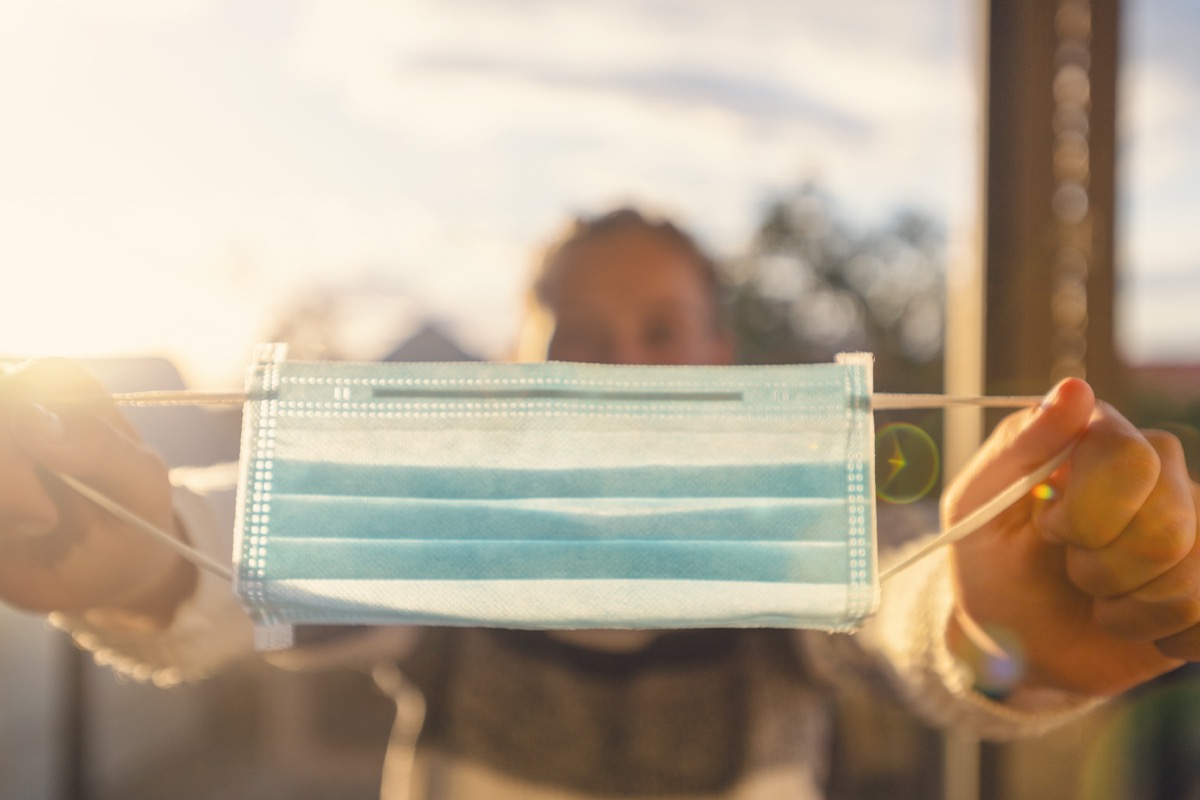The CDC warns on its website that the KN95 should never be used for layering. “Do not combine a KN95 mask with any other masks,” the site reads. “You should only use one KN95 mask at a time, and you should not use any type of second mask on top of or underneath a KN95 mask,” the health authority states. And while this particular model is the only mask flagged on the CDC site as a poor candidate for double-masking, CDC representatives have issued the same recommendation for similarly designed N95 masks. John Brooks, MD, chief medical officer of the CDC’s COVID-19 response, recently shared with U.S. News & World Report that both mask types are considered most effective when used on their own. He warned that the fairly new double masking recommendations have “unfortunately introduced substantial consumer confusion,” regarding what safety measures are optimal—especially when it comes to medical-grade respirators. “Adding a mask over or under respirators may decrease their performance,” he said. On the bright side, these masks are known to be 95 percent protective when worn properly, so you’re at little risk of transmission if you’re wearing one. Instead of adding layers, Brooks says consumers should focus on mask fit when it comes to these particular mask styles: the mask should create a tight seal with no air gaps for particles to flow through. So, if not respirators, which masks should you use for double layering? Brooks suggests wearing a cloth mask over a medical procedure mask, arguing that a more contoured top layer should help to reduce air flow around the seal. “The better fit forces air through the material of the medical procedure mask, which tends to include layers of polypropylene that is a good filtering material,” he explains. And, looking for more ways to protect yourself from COVID? Read on for more PPE tips, and for another mistake you’re making while double-masking, check out If You’re Layering These Masks, the CDC Says to Stop Immediately. 1 Try a mask brace or “fitter.” One way to make the most of your mask is to use a mask brace, also known as a “fitter.” These are stretchy, silicone braces that are worn over the mask to create a stronger seal around the edges. “Fitters have been scientifically demonstrated to improve filtration performance by as much as 90 percent or more, which, again, is getting into that range of filtration efficiency afforded by N95 respirators,” Brooks reportedly said during a virtual briefing in January. And for the latest masking updates delivered straight to your inbox, sign up for our daily newsletter. 2 …But skip the mask bracket. While mask braces can increase a surgical mask’s efficacy to be roughly equivalent to that of an N95, mask brackets—worn under the mask to give the wearer more room to breathe—may have the opposite effect.ae0fcc31ae342fd3a1346ebb1f342fcb “Mask brackets will make a mask less effective if the mask is no longer flush against your face, fully covering your nose and mouth, because the air would escape around the edges without being filtered,” Leann Poston, MD, a licensed physician and health advisor for Invigor Medical, recently told Best Life. And for a COVID prediction you don’t want to miss, This Is When We Can Expect the Next COVID Surge, Experts Say. 3 Try the “knot and tuck” technique. If you’re wearing a surgical or medical procedure mask, the CDC suggests the “knot and tuck” technique to reduce air gaps in three simple steps. First, fold the mask in half horizontally, so that the top and bottom of the ear loops touch. Next, knot each ear loop as close to the mask as possible. Last, unfold the mask and put in on. Look for any extra fabric that creates an air gap and fold it beneath the knots. Voila! A tighter, safer seal. “You can tell that the mask is tighter-fitting on your face because the mask moves in and out as you breathe,” Emily Sickbert-Bennett, the director of infection prevention at UNC Hospitals, said in a video tutorial for the method. 4 Don’t forget to protect your eyes. While face shields are insufficient replacements for masks, research shows that they, and other protective eyewear, could offer significant protection against ocular transmission of COVID-19. One study published in the Journal of the American Medical Association in August found that 19 percent of healthcare workers who used other protective measures including three-layer surgical masks, surgical gloves, shoe covers, and regular use of hand sanitizer still became infected with COVID. However, when they added face shields into the mix, new infections dropped to zero. Peter Collignon, PhD, an infectious diseases physician and professor at the Australian National University, recently told The Guardian that the results of this study suggest that when it comes to the spread of COVID, “we’ve under-appreciated how important the eyes are and overemphasized surfaces.” And for essential news on the vaccine, The Pfizer CEO Says This Is How Often You’ll Need a COVID Vaccine.

